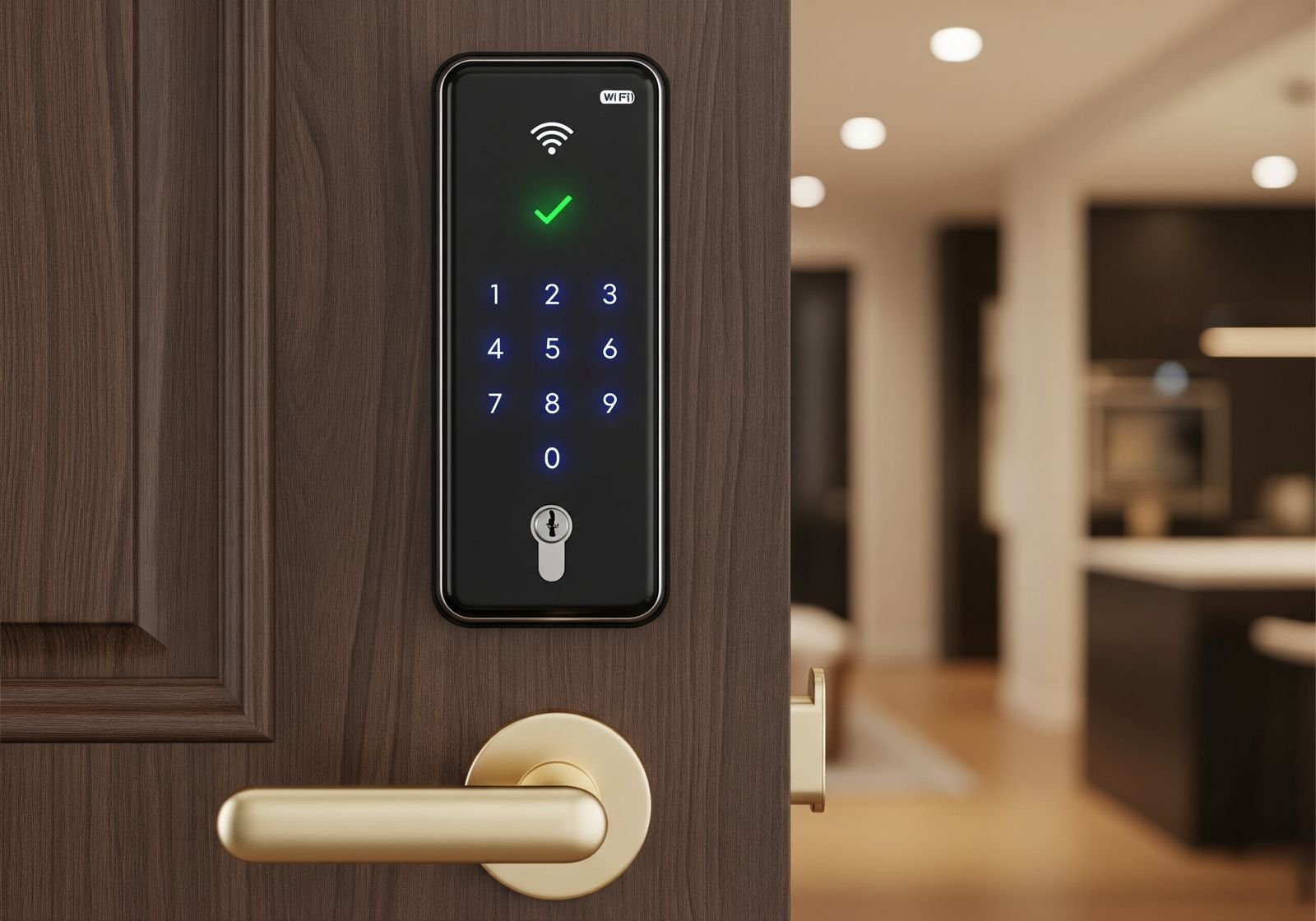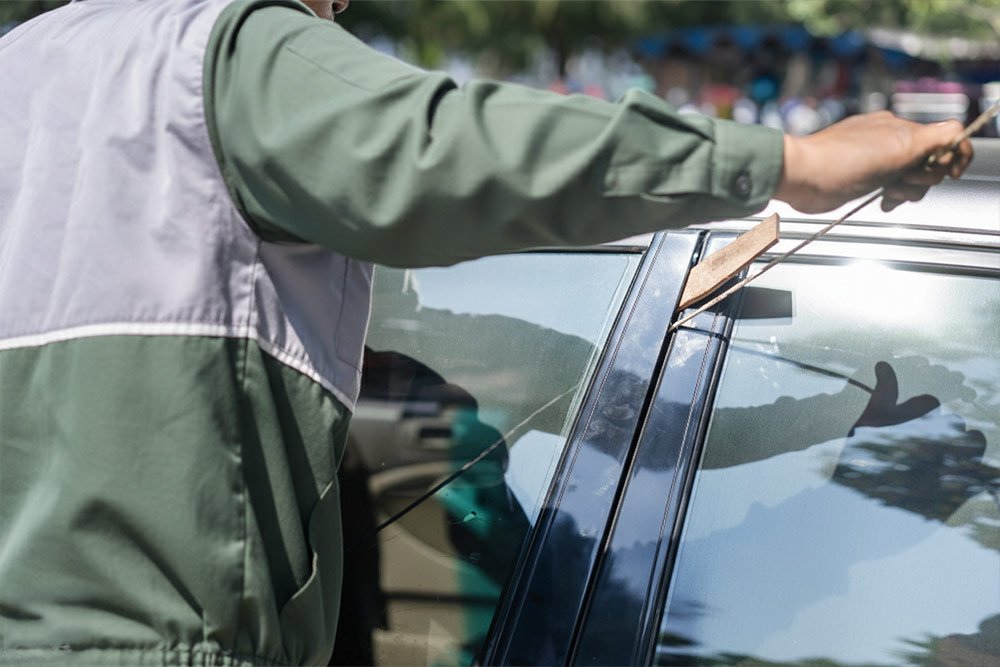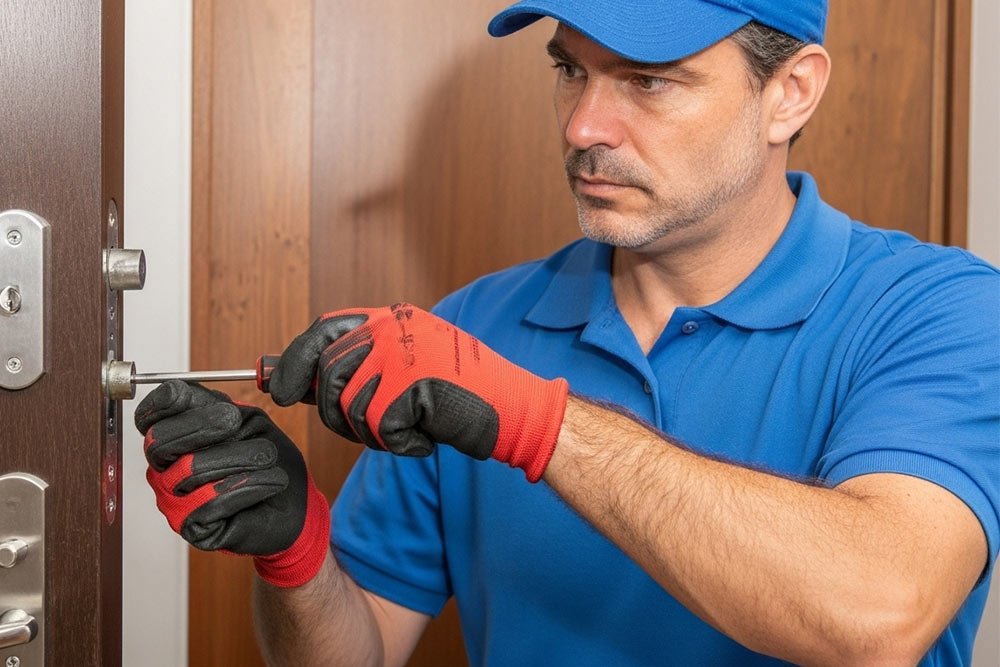Introduction: The Rise of Smart Locks in Modern Security
Gone are the days of hiding spare keys under doormats or fumbling through keychains in the dark. With technology revolutionizing home security, Smart Locks have emerged as one of the most innovative and practical solutions for both homeowners and businesses. These devices blend mechanical security with digital intelligence, allowing users to lock or unlock doors remotely, grant temporary access, monitor activity, and integrate with wider smart home systems.
This guide offers a deep dive into Smart Locks, examining their advantages, potential risks, and essential best practices to ensure you benefit from their technology without compromising your safety.
What Are Smart Locks?
A Smart Lock is an electronic locking mechanism that allows users to control door access digitally. Instead of relying solely on a physical key, smart locks can be operated via smartphone apps, keypads, fingerprint sensors, Bluetooth, Wi-Fi, or other wireless technologies.
They typically include several core components:
- A locking mechanism (deadbolt, latch, or actuator)
- Wireless communication module (Bluetooth, Wi-Fi, or Zigbee)
- Control software or firmware
- User interface (keypad, biometric sensor, or app)
- Power source (batteries or wired connection)
The purpose of Smart Locks is simple: to combine the reliability of traditional locks with the ease and intelligence of modern connectivity. Many smart locks also track entry logs, send real-time alerts, and integrate with voice assistants or home automation platforms.
Key Benefits of Smart Locks
Smart Locks are becoming increasingly popular because they simplify everyday access while enhancing convenience and control. Here are their most valuable advantages:
1. Keyless Convenience
One of the greatest benefits of Smart Locks is the elimination of traditional keys. Whether you use your phone, fingerprint, or an access code, you no longer have to worry about losing or forgetting your keys. This convenience is especially useful for busy households, frequent travelers, and property managers. You can also lock or unlock your door remotely, ensuring you never have to rush home just to let someone in.
2. Flexible Access Control through Smart Locks
Smart Locks allow homeowners to issue digital keys or unique PIN codes to family members, guests, service professionals, or tenants. These virtual keys can be time-limited or recurring, offering better control than traditional locks.
For example:
- Grant one-time access to a delivery person.
- Create a recurring code for your cleaner or dog walker.
- Disable access immediately after it’s no longer needed.
3. Activity Monitoring and Alerts
Most Smart Locks keep detailed logs of who enters and when. They can send instant alerts when the door is locked, unlocked, or tampered with. This data adds a layer of transparency, making it easier to monitor property access even when you’re away. If suspicious activity occurs, such as repeated failed attempts or forced entry, you’ll be notified immediately on your phone.
4. Smart Lock Integration with Home Automation Systems
Smart Locks can integrate with smart home ecosystems, allowing automation and voice control. Imagine unlocking your door and having your hallway lights turn on automatically, or locking up and activating your security system at the same time. Integration with assistants like Alexa, Google Home, or Apple HomeKit turns Smart Locks into part of a broader, unified home security experience.
5. Enhanced Resistance to Traditional Lock Attacks
Many modern Smart Locks eliminate traditional keyholes, reducing the risk of lock picking or bumping. Those that retain a key slot often use higher-grade mechanical designs for added resistance. While no lock is completely immune to forced entry, the absence of a physical keyhole can deter casual burglars and make entry attempts more detectable.
6. Remote Management and Peace of Mind
Smart Locks enable you to check and control your door’s status from anywhere. If you forget to lock up, simply tap your phone. If you’re expecting visitors, you can unlock the door for them remotely. This combination of control and awareness delivers exceptional peace of mind for homeowners and property managers alike.
The Risks and Limitations of Smart Locks
Despite their many benefits, Smart Locks are not risk-free. Like all connected devices, they introduce new vulnerabilities that traditional locks don’t face. Understanding these risks is the first step toward managing them effectively.
1. Cybersecurity Vulnerabilities
Smart Locks rely on wireless communication and software, which means they can be vulnerable to hacking attempts. Attackers may try to exploit weak encryption, outdated firmware, or insecure apps to gain unauthorized access.
Common cyber risks include:
- Default or weak passwords that remain unchanged
- Signal interception through man-in-the-middle attacks
- Firmware vulnerabilities that allow backdoor access
- Replay attacks, where previously captured data is reused to unlock the door
- Insecure APIs or cloud services
The risk is similar to that of any smart device: if not properly secured, it can become an entry point for hackers.
2. Power and Connectivity Dependence
Most Smart Locks are battery-powered. If the batteries die unexpectedly, the lock may become unresponsive. Similarly, if the Wi-Fi or Bluetooth connection fails, remote control features may stop working. Some locks include backup methods, such as mechanical key overrides or external power contacts. However, reliance on electricity and network stability remains a key concern.
3. Physical Weaknesses in Some Smart Lock Models
Not all Smart Locks are built with robust mechanical integrity. Some models may use cheaper components that are easier to pry, drill, or tamper with. A lock is only as strong as its weakest part, and digital convenience should never come at the cost of physical security.
4. Software Bugs and Firmware Exploits
Because Smart Locks depend on software, bugs or vulnerabilities can compromise their performance. Outdated firmware might contain exploitable flaws that allow hackers to bypass security. Manufacturers occasionally release updates to patch such issues, but users often neglect to install them, leaving the system exposed.
5. Privacy and Data Concerns
Smart Locks collect data such as access times, user activity, and entry logs. If stored or transmitted insecurely, this information can be intercepted or misused. Poor privacy practices by the manufacturer can lead to data exposure or unauthorized tracking.
6. Cost and Maintenance
Smart Locks typically cost more than traditional locks, both in hardware and installation. Some also require paid subscriptions for advanced features like remote control or integration with home security systems. Additionally, maintaining software updates, battery replacements, and connectivity troubleshooting can add ongoing responsibilities.
7. User Behavior and Human Error
Weak passcodes, shared access credentials, and failure to revoke expired permissions can all undermine the safety of Smart Locks. Simple mistakes like forgetting to replace low batteries or ignoring firmware updates can create avoidable security gaps.
Smart Locks vs Traditional Locks: Which is Better?
| FEATURE | SMART LOCKS | TRADITIONAL LOCKS |
|---|---|---|
| Keyless Entry | Yes | No |
| Remote Control | Yes | No |
| Activity Logs | Yes | No |
| Integration with Smart Devices | Yes | No |
| Vulnerable to Hacking | Yes | No |
| Vulnerable to Picking | Less likely | Yes |
| Requires Power | Yes | No |
| Cost | Higher | Lower |
| Maintenance | Moderate | Minimal |
Smart Locks are more versatile and intelligent, but they require consistent maintenance and digital awareness. Traditional locks, on the other hand, offer simplicity and reliability, though without the flexibility or control of digital systems.
Best Practices for Using Smart Locks Safely
The true strength lies not only in their design but in how they’re managed. Below are best practices to maximize their benefits while minimizing potential risks.
1. Choose Trusted Smart Lock Brands
Always select Smart Locks from reputable manufacturers known for their security standards, regular software updates, and transparent privacy policies. Avoid unknown brands that may lack proper encryption or firmware support.
2. Use Strong Authentication
Change all default PINs and passwords immediately after installation. Use strong, unique passwords with a mix of letters, numbers, and symbols. If the system supports two-factor authentication (2FA), enable it for added protection.
3. Keep Smart Lock Software Updated
Manufacturers often release firmware updates to fix bugs or patch vulnerabilities. Regularly check for updates and install them promptly. Enabling automatic updates is ideal when available.
4. Secure Your Home Network
Since Smart Locks rely on wireless communication, your home Wi-Fi security is essential. Use a strong router password, enable WPA3 encryption if supported, and consider placing smart devices on a separate network segment from personal computers.
5. Disable Unused Features
If your Smart Lock supports multiple communication options (such as Bluetooth, Wi-Fi, and NFC), disable any features you do not use. Each active interface increases the potential attack surface.
6. Regularly Review Smart Lock Access Permissions
Periodically review all users and access codes. Remove expired or unused credentials, and rotate important access codes regularly. This is especially important for rental properties or workplaces.
7. Monitor Activity Logs From Your Smart Locks
Smart Locks can track every lock and unlock event. Make it a habit to review your activity logs for unusual access times or failed attempts. Many models also allow you to receive alerts for suspicious activity.
8. Have a Backup Plan
Technology can fail. Always have a contingency plan, whether it’s a hidden mechanical key, backup power supply, or an alternative entry point. Check battery levels regularly and keep spare batteries handy.
9. Harden the Physical Hardware
Even the most advanced Smart Lock can be compromised if installed on a weak door or frame. Reinforce strike plates, use strong mounting hardware, and ensure your door material is solid and tamper-resistant.
10. Protect Privacy
Limit the permissions you grant to the Smart Lock’s mobile app. Avoid granting unnecessary access to contacts or location data. Also, choose models that store access data locally rather than in the cloud whenever possible.
Common Mistakes to Avoid with Smart Locks
- Leaving default passwords unchanged
- Ignoring firmware updates
- Reusing weak or predictable PIN codes
- Allowing expired guests to retain access
- Neglecting low-battery alerts
- Relying entirely on digital unlocking methods
- Buying low-quality, uncertified models
- Using public Wi-Fi to access the Smart Lock app
- Failing to segment IoT devices from the main network
- Forgetting to review app permissions and logs
Real-Life Use Cases for Smart Locks
1. Short-Term Rentals and Airbnb Properties
For hosts and property managers, Smart Locks eliminate the need for key exchanges. Temporary codes can be issued to guests and automatically revoked after checkout. This approach improves efficiency and accountability.
2. Office Buildings and Multi-Unit Residences
In workplaces or shared buildings, Smart Locks simplify access management. Administrators can assign unique credentials to employees and revoke them instantly if access is no longer authorized.
3. Family Homes
Parents can monitor when children arrive home from school and receive alerts when the door is unlocked. Elderly residents or people with disabilities can also benefit from easier access through voice commands or fingerprint sensors.
4. Vacation Homes Secured by Smart Locks
Smart Locks enable remote monitoring of secondary properties. Owners can lock, unlock, and check entry logs without having to visit the property in person.
The Future of Smart Locks
As technology advances, the next generation of Smart Locks will focus heavily on improving reliability, energy efficiency, and cybersecurity. Key developments to watch include:
- Biometric advancements: Improved fingerprint and facial recognition for secure and convenient access.
- Longer battery life: Energy-efficient designs that last months or even years on a single charge.
- Standardization: Universal standards like Matter and Thread will enhance interoperability among smart devices.
- Enhanced local control: Reduced dependence on cloud connectivity for better privacy and faster performance.
- AI-powered anomaly detection: Smart Locks that learn access patterns and flag unusual behavior.
Practical Checklist Before Installing Smart Locks
To ensure a secure and smooth installation, review the following checklist:
- Research and select a reliable Smart Lock model.
- Confirm that it fits your door type and latch design.
- Change all default credentials before use.
- Secure your Wi-Fi and update your router firmware.
- Set up strong, unique access codes for all users.
- Enable two-factor authentication if available.
- Install firmware updates immediately upon setup.
- Configure notifications for lock events and battery alerts.
- Create a physical backup entry method.
- Educate all household members on proper use.
Conclusion: Are Smart Locks Worth It?
Smart Locks represent the perfect blend of security and convenience in a digital age. They empower homeowners with remote access, real-time monitoring, and integration into broader smart home systems. When managed properly, they can offer a safer, more flexible way to protect your property. However, like all connected devices, they demand responsible use. Regular updates, strong authentication, network security, and user awareness are critical for maintaining their integrity.
If you’re considering upgrading to a smart lock, start with a free consultation from AAA Mega Locksmiths, who understand both physical and digital security. We also provide end-to-end support from product selection to installation and maintenance, ensuring your transition to smart access is smooth and secure.




